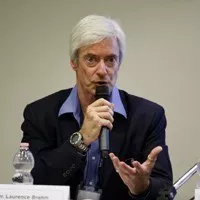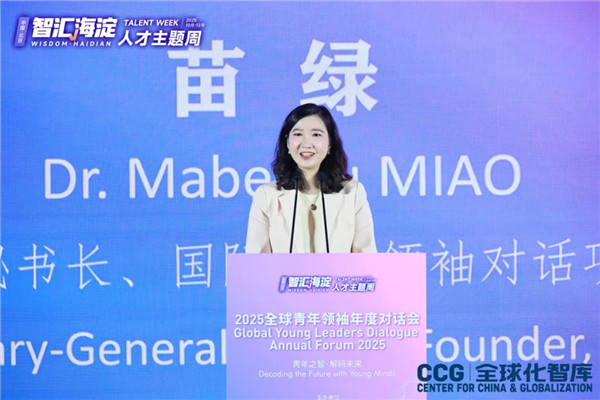Laurence Brahm: Nothing will stop China’s progress
October 02 , 2019
The author (R) attends the celebrations for the 70th anniversary of the founding of the People’s Republic of China (PRC) in Beijing, Oct 1, 2019. [Photo provided to chinadaily.com.cn]
By Laurence Brahm, a senior international research fellow at CCG
Personally participating in the October 1 National Day 70th Anniversary celebrations, there are some observations that I wish to share. The scale of the celebration was unprecedented to my knowledge. The messages that can be decoded from the symbolism that unfolded from two days of events beginning on September 30 were crystal clear.
It all began on September 30 at 10am, when President Xi Jinping visited Mao Zedong’s memorial in Tiananmen Square, where Mao’s body is preserved. In a show of piety and respect deserved by one’s ancestors or the founder of a lineage inherited, President Xi bowed three times in the memorial hall. To my knowledge, this was unprecedented.
The act represented an expression of profound respect to a powerful history of national transformation that has occurred over just seven decades. Such vast and comprehensive changes within what is in a timeline context a mere seven decades, is historically unprecedented anywhere at any time in world history. Deep respect toward those who have sequentially been instrumental part in the massive changes that China has undergone in building and bringing the nation to where it is today was a key theme of the national day celebrations. Another was a clear vision of the progress China will achieve in the future.
At the National Day banquet celebration in the vast Great Hall of the People on the night of September 30, President Xi made it clear in his address that no force will stand in the way of the Chinese people’s progress. This was a clear message to those few western politicians still seeking to contain China by unilaterally launching a trade war, thereby precipitating a cold war, that neither act of interference will stop China’s own national progress, but moreover its vision of a “shared common destiny of mankind.”
At 10 am on the morning of October 1, from Tiananmen Gate, President Xi re-iterated points made the night before emphasizing, “There is no force that can shake the position of our great nation. There is no force that can block the Chinese people’s pace of progress.” The impressive military procession that followed, that emphasized technology, made it clear that China as a nation and the Chinese people are ready to meet any challenge to their national defense.
Then a parade followed that swept the audience viewing from the rostrums across each decade since 1949, with marchers and dancers wearing the clothes and carrying symbols of the 1950s-1960s, 1970s-1980s, 1990s-2000, and 2010 to present, followed by the political and economic thoughts and accomplishments of each generation of leaders depicted through signs and floats. For someone who has lived through much of these periods in China, it was an emotionally sweeping parade of the past that brought us to the present, and then the future.

Floats on various themes take part in a mass rally celebrating the People’s Republic of China’s 70th anniversary in Beijing, Capital of China, Oct 1, 2019. [Photo by Feng Yongbin/chinadaily.com.cn]
Then floats and parade marchers indicated the current direction of national policies. High technology programmers and robots appeared in one wave, followed by heritage architecture and environmental protection images. These repeated in the floats representing each province and autonomous region. The synergistic juxtaposition of images from culture to technology, heritage to aerospace, environment to artificial intelligence, were resounding as aspirations for the future of China’s youth and clearly the direction policymakers want them to move in.
But many observers of the celebration were left asking a question, which remains a mystery. When President Xi reviewed the troops before commencement of the military parade, there was another Red Flag limo with open roof and microphones for calling out to the troops during review. But there was nobody there. The Red Flag limo was empty. Its license plate had four digits: 1949. Moreover, the empty limo followed behind President Xi’s driving in the middle of the road mysteriously. This is the first time such an empty limo followed that of the President when reviewing the troops on national day.
The question everyone was left wondering was, who was symbolically seated in the empty limo? The People’s Daily and Xinhua websites reported a common interpretation being circulated publicly about the empty Red Flag limo with the 1949 license plate that was central to the review: “We want you to see that today is as prosperous as you once wished.”
On October 1, 1949, Chairman Mao Zedong announced to the world that the Chinese people had finally stood up. Seventy years later on the same day, President Xi Jinping made it clear to the world that nothing will stop their progress.

Laurence Brahm, a senior international research fellow at Center for China and Globalization(CCG) and founding director of the Himalayan Consensus, an author of Zhu Rongji and the Transformation of Modern China.
Topical News See more






